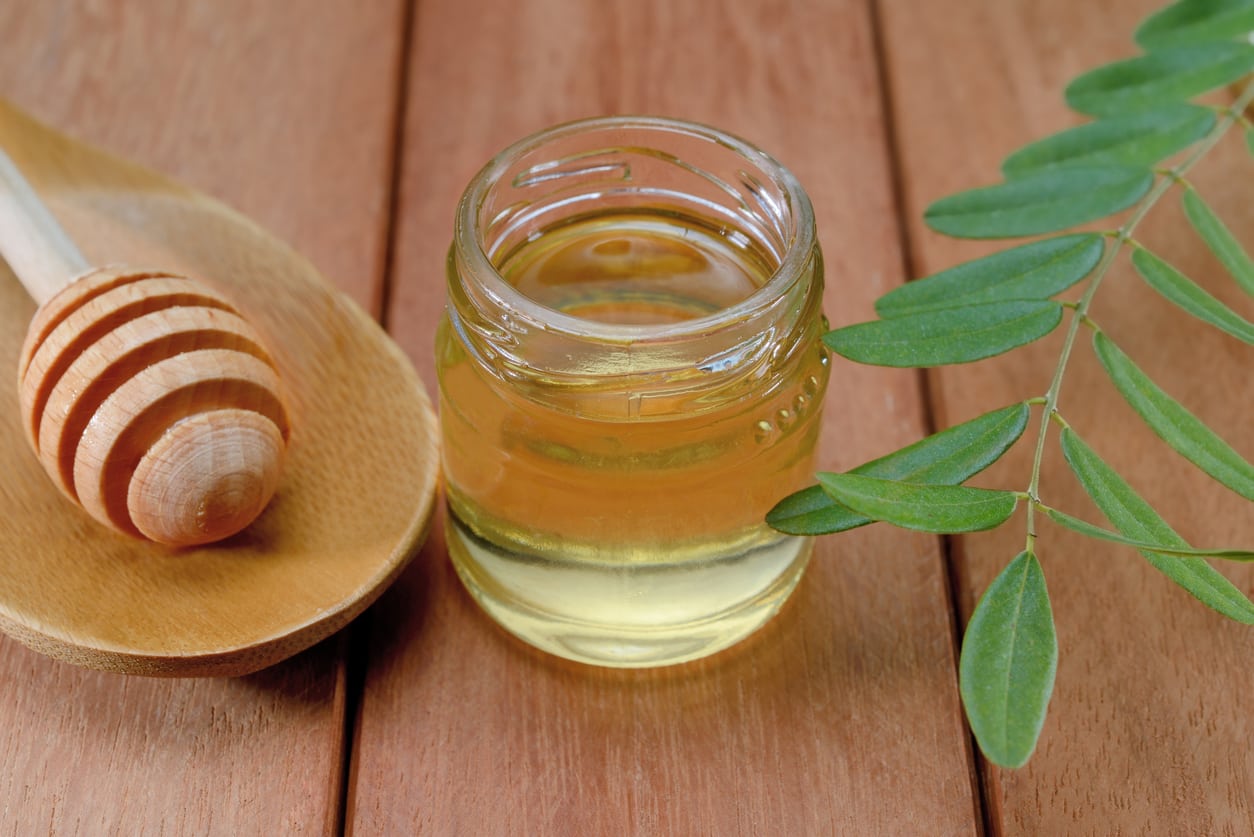
Honey is good for you, that is if it isn’t processed and especially if it is acacia honey. What is acacia honey? According to many people, acacia honey is the best, most sought after honey in the world. Where does acacia honey come from? Maybe not where you think it does. Keep reading to find out the answers to these questions, as well as acacia honey uses and more fascinating acacia honey information.
What is Acacia Honey?
Acacia honey is usually colorless, although occasionally it has a tint of lemon yellow or yellow/green to it. Why is it so sought after? It is sought after because the nectar of the blossoms that produce acacia honey do not always produce a crop of honey. So where does acacia honey come from? If you know a bit about trees and geography, then you may be thinking that acacia honey comes from acacia trees, natives of sub-tropical to tropical regions of the world, particularly Australia. Well, you’d be wrong. Acacia honey actually comes from the black locust tree (Robinia pseudoacacia), a native of eastern and southeastern North America, sometimes called ‘false acacia.’ Black locust trees not only produce amazing honey (okay, the bees produce the honey), but as members of the pea or Fabaceae family, they fix nitrogen into the soil, which makes it a great choice for damaged or poor soils. Black locust trees grow rapidly and can attain heights of 40 to 70 feet (12-21 m.) when mature. The trees thrive in moist, fertile soil and are often grown as firewood because they grow rapidly and burn hot.
Acacia Honey Information
Black locusts, unfortunately, don’t always produce honey. The nectar flow of the blossoms is subject to weather conditions, so a tree may have honey one year and not again for five years. Also, even in years when the nectar flow is good, the bloom period is very short, about ten days. So it’s no wonder that acacia honey is so sought after; it’s fairly rare. The major reason for the popularity of acacia honey is its nutrient value and its ability to crystallize slowly. Acacia honey crystallizes very slowly because it is high in fructose. It is the least allergenic of all other honey types. Its low pollen content makes it suitable for many allergy sufferers.
Acacia Honey Uses
Acacia honey is used for its antiseptic, healing, and antimicrobial properties, low pollen content, and its natural antioxidants. It can be used in the same way as any other honey, stirred into beverages or used in baking. Since acacia honey is so pure, it has a lightly sweet, mildly floral flavor that doesn’t overtake other flavors, making it a nutritious sweetening option.
Sign up for the Gardening Know How newsletter today and receive a free copy of our e-book "How to Grow Delicious Tomatoes".

Amy Grant has been gardening for 30 years and writing for 15. A professional chef and caterer, Amy's area of expertise is culinary gardening.
